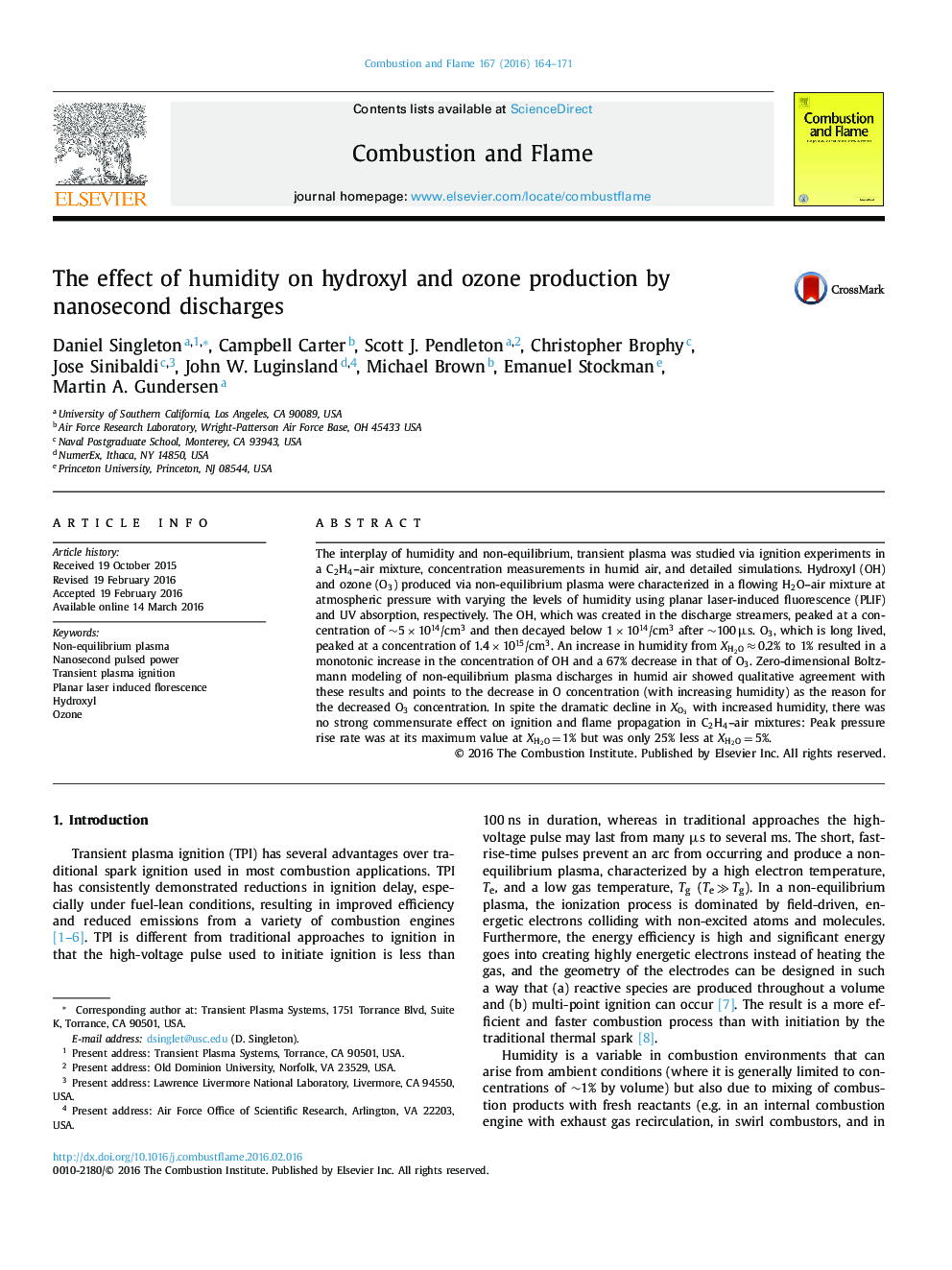| Article ID | Journal | Published Year | Pages | File Type |
|---|---|---|---|---|
| 6594098 | Combustion and Flame | 2016 | 8 Pages |
Abstract
The interplay of humidity and non-equilibrium, transient plasma was studied via ignition experiments in a C2H4-air mixture, concentration measurements in humid air, and detailed simulations. Hydroxyl (OH) and ozone (O3) produced via non-equilibrium plasma were characterized in a flowing H2O-air mixture at atmospheric pressure with varying the levels of humidity using planar laser-induced fluorescence (PLIF) and UV absorption, respectively. The OH, which was created in the discharge streamers, peaked at a concentration of â¼5 Ã 1014/cm3 and then decayed below 1 Ã 1014/cm3 after â¼100 µs. O3, which is long lived, peaked at a concentration of 1.4 Ã 1015/cm3. An increase in humidity from XH2O â 0.2% to 1% resulted in a monotonic increase in the concentration of OH and a 67% decrease in that of O3. Zero-dimensional Boltzmann modeling of non-equilibrium plasma discharges in humid air showed qualitative agreement with these results and points to the decrease in O concentration (with increasing humidity) as the reason for the decreased O3 concentration. In spite the dramatic decline in XO3 with increased humidity, there was no strong commensurate effect on ignition and flame propagation in C2H4-air mixtures: Peak pressure rise rate was at its maximum value at XH2O = 1% but was only 25% less at XH2O = 5%.
Keywords
Related Topics
Physical Sciences and Engineering
Chemical Engineering
Chemical Engineering (General)
Authors
Daniel Singleton, Campbell Carter, Scott J. Pendleton, Christopher Brophy, Jose Sinibaldi, John W. Luginsland, Michael Brown, Emanuel Stockman, Martin A. Gundersen,
